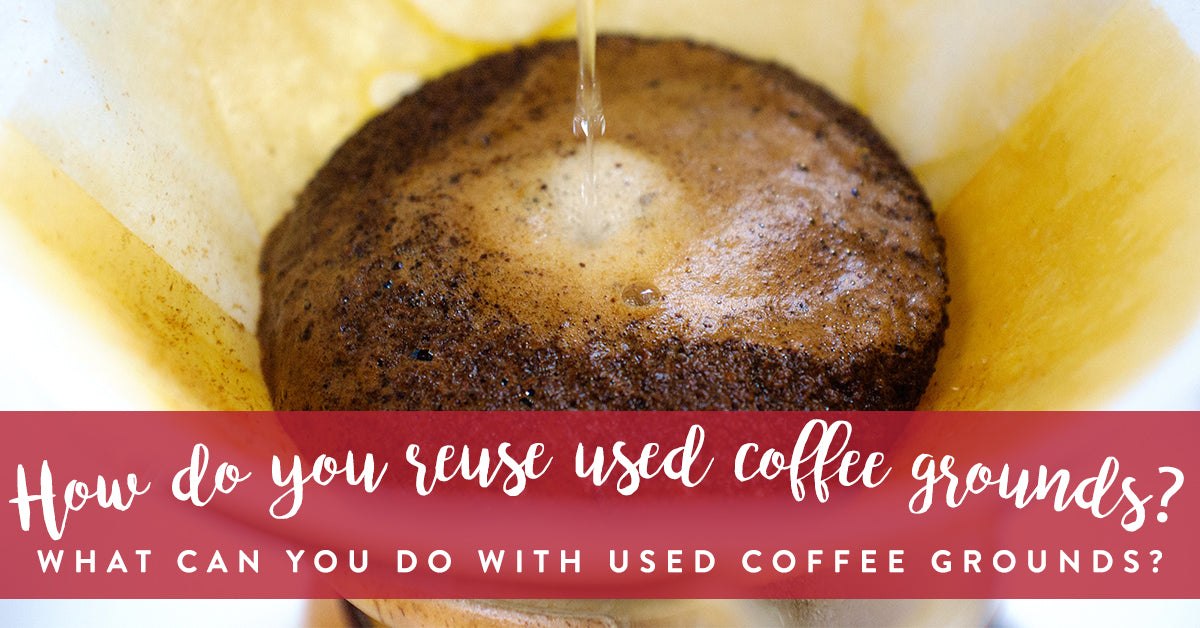
How do you reuse used coffee grounds?
What can you do with used coffee grounds?
We first became aware of the various reuse options for used coffee grounds over a decade ago, when Simon and his wife, Caroline, ran a visitor attraction in Devon and David supplied them with coffee. The attraction had a very busy coffee shop with a customer base including many avid gardeners. Some of these customers regularly asked for the used coffee grinds from our busy coffee machines. These customers used the grounds in their gardens as a slug repellant!
On a whim, Simon and Caroline started offering used grounds for sale as a slug repellant at a token price of 50p per kilo. The proceeds were used to fund ongoing restoration of the ancient water mill at the heart of the attraction. Each summer hundreds of pounds were raised for this purpose.
Fast forward a few years and another coffee shop owned by Simon in Exeter was approached by a social enterprise growing gourmet oyster mushrooms on old coffee grounds, which they collected from cafes by bike. The project was based in a vacant high street retail space and was staffed by long-term unemployed and some homeless people. The overall aim of GroCycle was to contribute to reducing the amount of coffee grains going to landfill. Since their launch in 2011, GroCycle has now spawned many similar initiatives around the UK and globally.
With all this in mind and in an effort to promote reuse and recycling, we thought we would provide a summary of some of the most popular uses for used coffee grounds, all of which we have tried with success.
Plant Fertiliser
Sprinkle used coffee grounds around plants as a slow-release fertiliser. It transpires that coffee grounds contain a good amount of the essential nutrient nitrogen, as well as some potassium and phosphorus, plus other micronutrients. The quantity and proportions of these nutrients vary, but studies have found that compost made with coffee grounds and kitchen waste is richer in nutrients than compost made with waste alone.
Attract Earthworms
It appears that earthworms also love coffee. They are attracted to organic material like coffee grounds, and they help distribute it through the soil. A healthy worm population enhances the quality of garden soil by stimulating microbial activity, churning the soil, improving water-holding capacity and water filtration, providing channels for root growth, and burying plant residue. So, mixing coffee grounds in your soil not only adds nutrients, it attracts worms too.
Repel Slugs
This is probably one of the most controversial uses of used coffee grounds in the gardening world. A Google search will yield plenty of evidence supporting and refuting the effectiveness of sprinkling used grounds around plants that need protection. Scientific proof behind the method is lacking. All we can say is many of our customers swore by this method and paid us well for the privilege of buying our coffee waste!
Tame Fireplace Ashes
Sprinkling damp coffee grounds onto fireplace embers can help you sweep up ash without kicking up dust. The damp grounds act as a binder on cool ashes to help contain the dust and particles. Always let the fire go out completely and don’t drop the grounds from a high distance.
Deodorise Your Fridge
Used coffee grounds can be a powerful odour absorber inside a fridge. Leaving a bowlful of used grounds in the fridge overnight will help eliminate unwanted odours. Repeat as often as you’d like. If you’re combating a particularly potent odour that persists, you can leave the grounds in the fridge and they will continue to eliminate the odour for some time.
Scour Pans and Tools
Remove stubborn, stuck-on grime by scrubbing with a couple spoonfuls of coffee grounds. The gentle abrasion provides extra scouring power to clean the dirtiest of dishes and pans. You don’t need to mix in soap, just use a thin cloth to get the abrasive action working. Before scouring the whole pan, test a small area to make sure the grounds don’t stain the surface and avoid use on delicate ceramic or non-stick surfaces.
Exfoliate Your Skin
You might be surprised to know a solution to your rough elbows is sitting in your coffee machine. Coffee grounds can make a great body scrub. They’re the perfect size and shape for exfoliating rough elbows, knees and feet, but they are still fairly gentle on your skin. Combine equal parts coffee grounds and coconut oil, or honey, and rub onto rough skin in a circular motion. Rinse away grounds and pat dry. This treatment is not recommended for your face, the irregular shape of the grounds can be too rough on sensitive facial skin.
Grow Mushrooms
This method is easy to use at home:
This method will work for most types of mushroom, but shiitake and oyster varieties tend to be the easiest to cultivate.
Store Your Used Grounds
Wondering where to keep all the used coffee grounds you’ll be storing-up in future? Investing in another food waste bin is a low cost option, but we use a second Coffee Gator storage canister for this purpose.
We hope you enjoy trying these methods for reusing used coffee grounds. Tell us about your experiences with these or other methods, especially if you use them already, in the section below.


